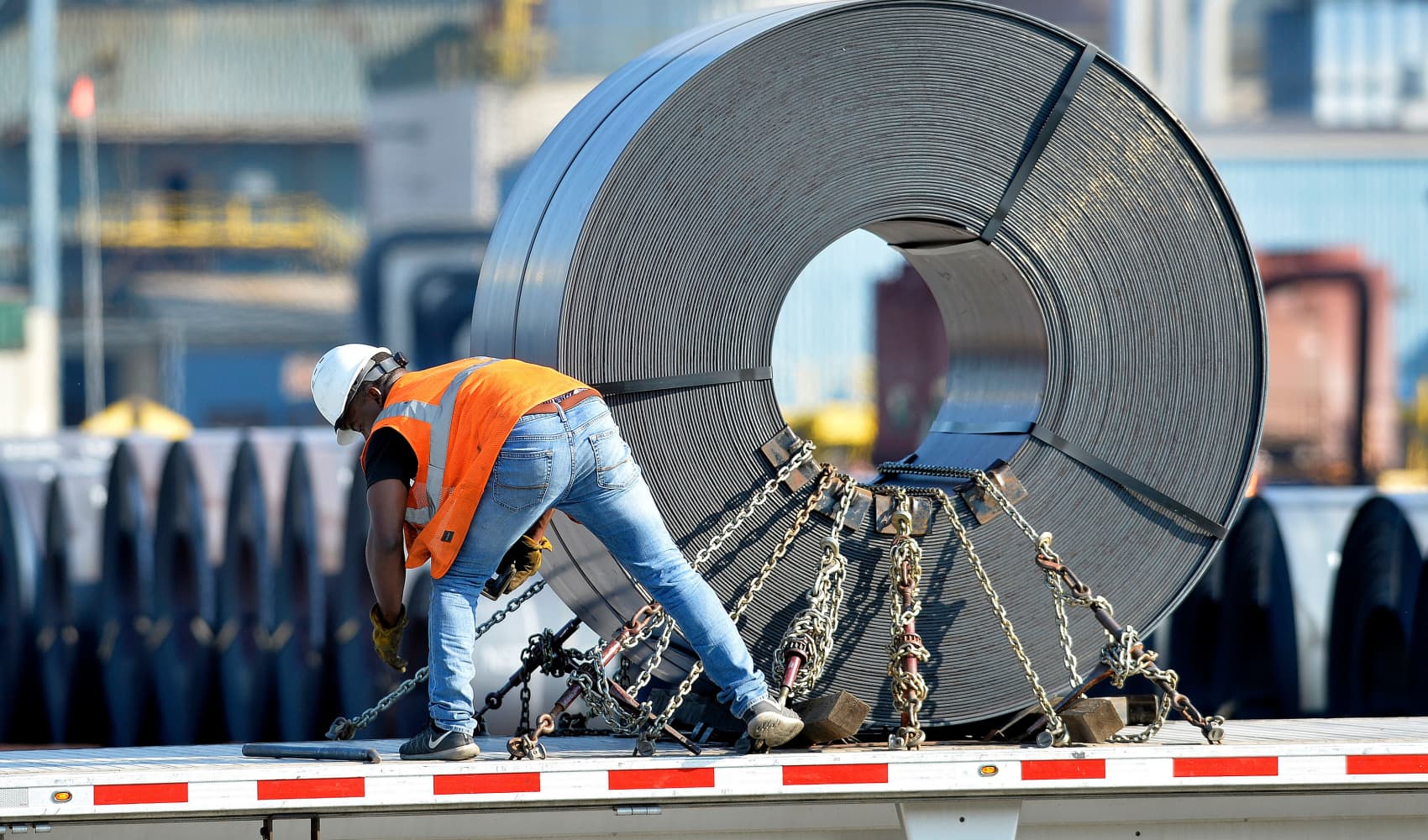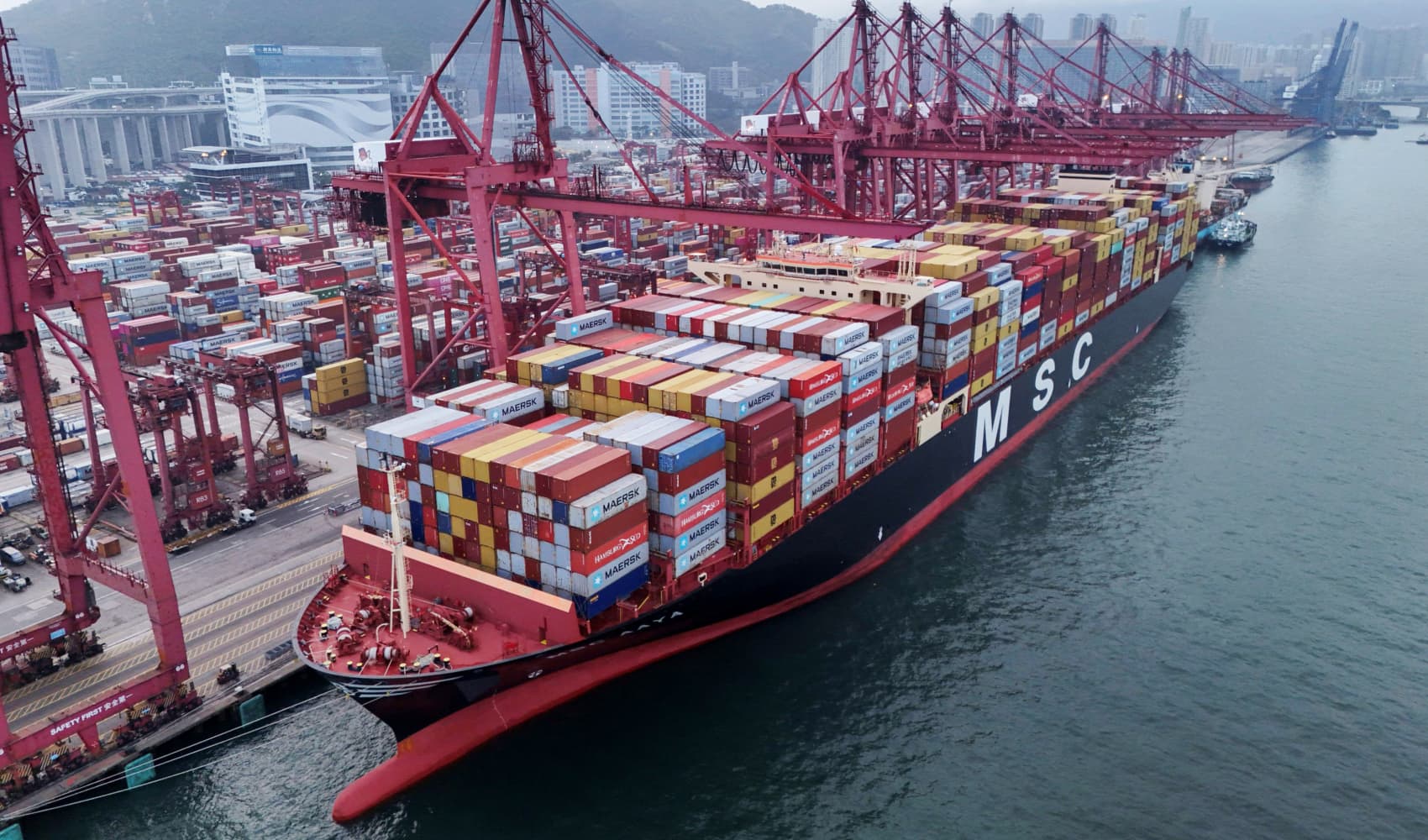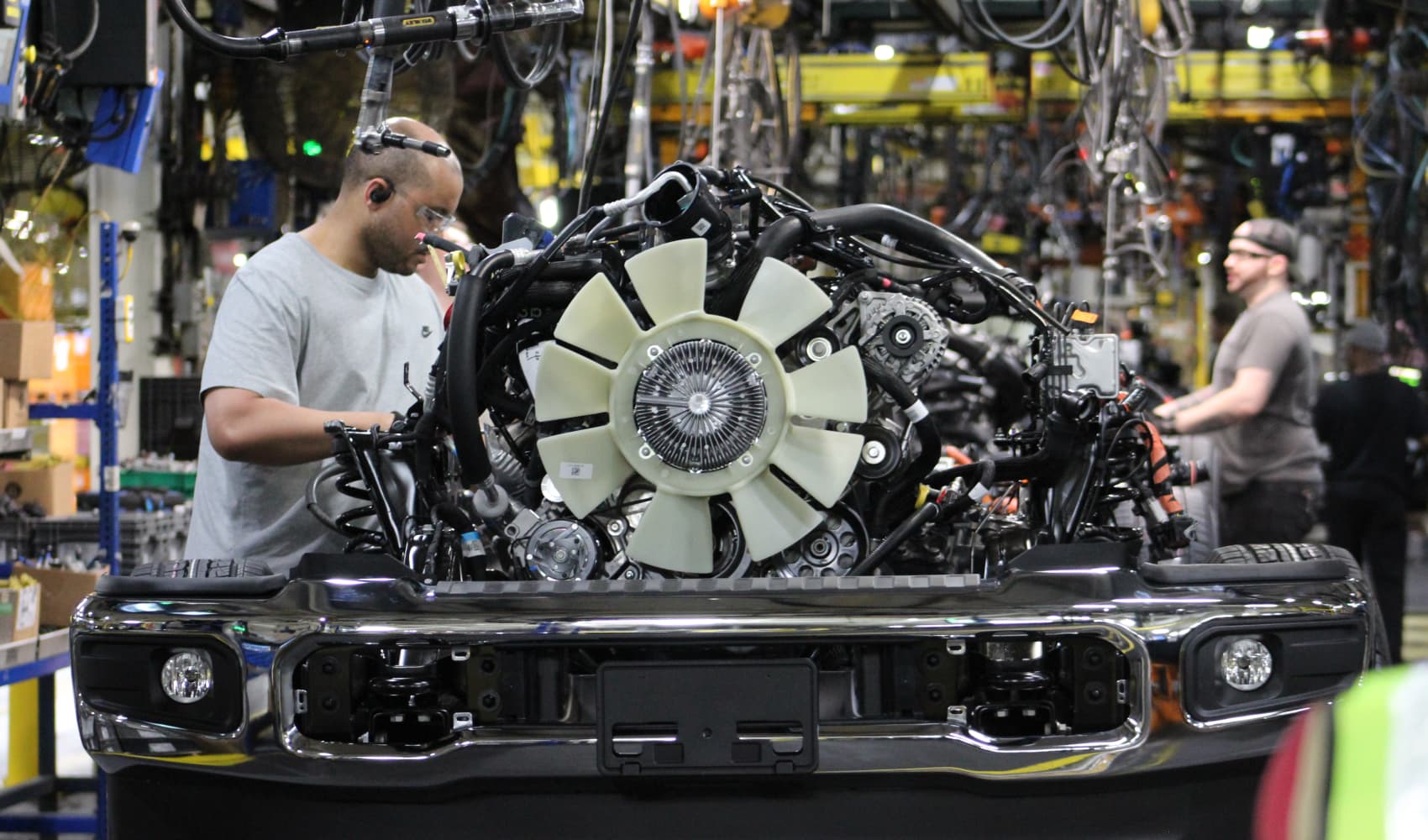Nucor's Steel Boom: Trump Tariffs the Reason?
Steel Giant Nucor's Record Backlog: Trump's Tariffs Paying Off?
Introduction: A Boom Time for American Steel?
Is the American steel industry roaring back to life? Well, if you listen to Nucor CEO Leon Topalian, the answer is a resounding yes! In a recent interview, Topalian revealed some jaw-dropping news: Nucor, the largest structural fabricator in the U.S., is experiencing its biggest order backlog ever. But what's fueling this surge in demand? And does it have anything to do with those controversial tariffs championed by former President Donald Trump?
Nucor's Record-Breaking Backlog: A Sign of the Times
Let's dive into the numbers. Topalian, in an interview with CNBC’s Jim Cramer, didn't mince words. He stated unequivocally that Nucor's backlog, particularly at facilities like Nucor Yamoto and the Berkeley beam mill, has reached unprecedented levels. This isn't just a slight uptick; it's a historic surge.
What Does a Backlog Tell Us?
A large backlog is like a traffic jam on the highway of commerce. It signifies that demand is exceeding supply. In Nucor's case, it means that businesses are clamoring for their steel products, filling their order books to the brim.
Trump's Tariffs: A Steel Shield or Economic Sword?
The million-dollar question: Did Trump's tariffs contribute to this boom? While there's no single answer, it's undeniable that the tariffs aimed to protect American steel producers from foreign competition. But did they work as intended, or were they a blunt instrument causing more harm than good?
The Argument for Tariffs: Leveling the Playing Field
Proponents of tariffs, like Topalian, argue that they create a more level playing field for American companies. By making imported steel more expensive, tariffs encourage businesses to buy domestically produced steel, boosting demand for companies like Nucor. Essentially, they act as a shield, protecting American jobs and industries.
The Counterargument: Increased Costs and Trade Wars
Critics of tariffs contend that they increase costs for businesses and consumers. When steel becomes more expensive, the prices of products that use steel – from cars to appliances – also rise. Furthermore, tariffs can spark retaliatory trade wars, harming American exports. So, were the tariffs a calculated risk that paid off, or a gamble that could have backfired?
Demand Drivers: Beyond the Tariffs
While tariffs may have played a role, it's crucial to acknowledge other factors driving demand for steel. The American economy is complex, and there are multiple forces at play.
Infrastructure Spending: Building a Better America?
One significant driver is infrastructure spending. The recent infrastructure bill promises billions of dollars for roads, bridges, and other projects that require massive amounts of steel. This could be a major catalyst for the steel industry in the coming years.
Reshoring: Bringing Jobs Back Home
Another trend is reshoring, where companies are bringing manufacturing operations back to the United States. This is driven by factors such as rising labor costs in other countries, supply chain disruptions, and a desire to be closer to customers.
The Housing Market: A Mixed Bag
The housing market also plays a role. While rising interest rates have cooled the market somewhat, demand for new homes remains relatively strong. And what do new homes need? You guessed it: steel!
Nucor: A Steel Powerhouse
Nucor isn't just any steel company; it's a giant in the industry. As the largest structural fabricator in the U.S., it plays a critical role in supplying steel for construction projects across the country. But what makes Nucor so successful?
Innovation and Efficiency: The Nucor Edge
Nucor has a reputation for innovation and efficiency. It invests heavily in technology and has a highly motivated workforce. This allows it to produce high-quality steel at competitive prices.
A Culture of Performance: Empowering Employees
Nucor also has a unique corporate culture. It emphasizes teamwork, accountability, and performance-based pay. This creates a strong incentive for employees to work hard and contribute to the company's success. In a nutshell, it’s the combination of cutting-edge tech and a motivated workforce that sets Nucor apart.
The Future of Steel: A Crystal Ball
So, what does the future hold for the steel industry? Will the boom continue, or is it just a temporary blip? While it's impossible to predict the future with certainty, several factors suggest that the steel industry could remain strong in the coming years.
Long-Term Demand Drivers: The Need for Steel
As populations grow and economies develop, the demand for steel will continue to increase. Steel is essential for infrastructure, construction, manufacturing, and countless other industries. In short, as the world grows, so does the need for steel.
Sustainability: Green Steel on the Rise
There's also a growing focus on sustainability. Steel companies are investing in new technologies to reduce their carbon footprint and produce "green steel." This could open up new markets and opportunities for companies like Nucor.
Conclusion: The Steel Story Continues
Nucor's record backlog is undoubtedly a positive sign for the American steel industry. While the role of Trump's tariffs is a subject of debate, other factors, such as infrastructure spending and reshoring, are also contributing to the surge in demand. Nucor, with its focus on innovation and efficiency, is well-positioned to capitalize on these trends. Whether the boom continues remains to be seen, but one thing is clear: the steel story is far from over. American steel may be back!
Frequently Asked Questions
Q1: What exactly is a "backlog" in the context of a steel company?
A backlog represents the amount of orders a company has received but hasn't yet fulfilled. A large backlog generally indicates strong demand for the company's products.
Q2: How do tariffs affect the price of steel?
Tariffs increase the price of imported steel by adding a tax or duty. This can make domestically produced steel more competitive.
Q3: What are some alternative materials to steel in construction?
Alternatives include concrete, wood, aluminum, and composites. Each has its own advantages and disadvantages in terms of cost, strength, and environmental impact.
Q4: How is Nucor addressing environmental concerns in its steel production?
Nucor is investing in technologies to reduce its carbon emissions, such as electric arc furnaces and carbon capture technologies. They are also focusing on recycling scrap steel.
Q5: What are the biggest challenges facing the US steel industry right now?
Challenges include competition from foreign producers, fluctuating raw material prices, and the need to invest in new technologies to meet environmental regulations.





